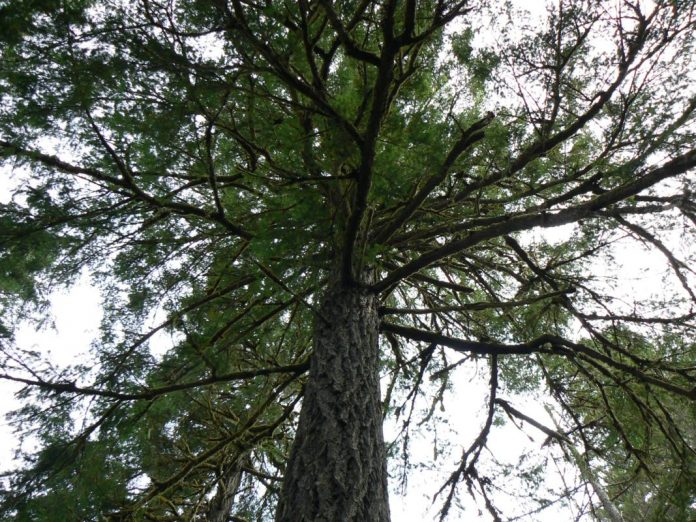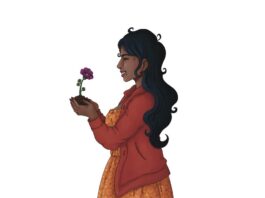I was in Bruges, contemplating architecture, as one does. Beautiful, old architecture. Canada’s a young country, we don’t have any of that, save for a few churches in Quebec.
We do have markers of the epochs of time: we just haven’t figured out that we don’t have to build them all ourselves. This isn’t the specific problem here in Abbotsford, but it is a systemic issue. One that permeates city council, and influences the way old trees gets treated.
Abbotsford News recently reported that a developer applied to build a four-storey, 72-unit apartment on MacLure road, just east of Gladwin. To do this, they’ll need to chop up an old Douglas-fir — all 130-feet of it. Even though the tree’s located at the property’s southern edge, it’ll have to go because its massive root system would interfere with the planned underground parcade.
It’s difficult to appreciate this region’s ancient beauty when it’s regularly built upon and rebuilt upon. It’s important to keep roots.
At the November 3 city council meeting, Councilor Patricia Ross asked for the project’s first reading to be deferred until the city’s new tree protection bylaw comes out, expected around the end of November. While her motion to wait was backed by Mayor Henry Braun and Councillor Dave Loewen, it was defeated. Counselor Ross Siemens cited the unfairness of “changing the goal posts,” by waiting for the new bylaw after the developer had already moved through the proper processes.
According to Abbotsford News, an arborist working for the developer called the tree “an exceptionally large tree for an urban environment,” and “of possible specimen quality.”
No doubt it is. The Douglas-fir, is a symbol of the coast; its thick, furrowed bark, representative of resilience. There’s a story, about a mouse trying to escape a forest fire. He asks all the trees to save him as he tries to outrun the flames. None can — except the Douglas — whose skin is like brick. It’s unfortunate to see an image of dignity axed.
Council held a public hearing on the following Monday. John Vissers, president of Fraser Valley Conservancy, commented “We have managed in the last 150 years to cut down almost every mature tree in the Fraser Valley,” Abbotsford Times reported.
He added that the tree has “natural capital,” and is irreplaceable. Vissers also noted that the tree was probably older than Abbotsford itself.
So what’s one big tree? Well, it’s worth more than its weight in small trees, apparently.
“Once you’ve cut it down, you’ve lost it forever, and you can’t go back and fix that,” Counselor Patricia Ross said. “There’s probably more in carbon absorption value in one of its branches than in any one of the trees that would be replanted [for] it.”
Ross is right. Research published in Nature shows that 97 per cent of the over 400 different tree species surveyed increase in mass growth rate continuously with their size. Meaning, older trees absorb far more carbon dioxide than their young counterparts. As the tree increases in age, so too does its amount of leaves per square foot. More leaves, more filtering.
A University of Hamburg study found the same thing. Almost 70 per cent of all the carbon stored in trees will be accumulated in the last half of a tree’s life. Planting little trees to replace big trees (especially Abbotsford’s sad 3:1 required replacement ratio for trees larger than 30 cm in diameter) won’t make up for the loss.
That’s one big tree: more efficient and better suited to clean the air than it’s little friends. And even so, a single tree may not clean all the smog Vancouver sends up, but it represents the need to get serious about pollution.
According to Scientific America, trees improve air quality by “capturing six common air pollutants and toxic gases: ground-level ozone, particulate matter, carbon monoxide, nitrogen oxides, sulfur dioxide, and lead.”
A study by U.S.-based The Nature Conservancy showed that the average reduction of particulate matter (microscopic particles, they get trapped in your lungs) near a tree was between seven and 24 per cent. Particulate matter pollution could cause the deaths of an estimated 6.2 million people each year by 2050, the study says. It’ll be good to reduce it.
What about a single big tree? One that inspires awe, gets pointed out and admired by passing people. I wonder how much it affects the psychology of its neighbours.
A study in Scientific Reports showed that “people who live in areas with higher street tree density report better health perception, and fewer cardio-metabolic conditions compared with their peers living in areas with lower street tree density.”
Their study, which was conducted in Toronto, shows that an additional 10 trees on a given block corresponded to a one per cent increase in how healthy nearby residents felt.
“Improving health perception and decreasing cardio-metabolic conditions by planting 10 more trees per city block is equivalent to increasing the income of every household in that city block by more than $10,000, which is more costly than planting the additional 10 trees.”
Interestingly, 11 more trees in a city block was found to, on average, decrease cardio-metabolic conditions in ways comparable to an increase in annual personal income of $20,000.
The thing about a 50-plus-year-old Douglas-fir — as impressive as it is — it’s not a 150 year old, or a 200 year old tree. May as well just cut it down then, right? But 50 years is a better start than 20. If our pre-centennials are chopped up, we’ll end up without bi- or tri-centennials.
In 50 years, I’d much rather walk down Gladwin, quiz my grandkids on the tree species, and point out the seemingly miraculous tenacity of our 100-year-old Douglas-fir, than play in the shadow of a third or fourth reincarnation of a four (by then, 40?) storey apartment complex.
Certainly, we want as great a number of trees as possible. Today, the tree represents so much more than just any Douglas-fir. Since the first conversation about removing it, it has been given the qualities of an image of community versus development. Will the city acknowledge the significance; or will they plough through with redevelopment? This Douglas-fir can no longer be just a tree. It’s a symbol of psychological well being, health, community; and contrary to developers’ beliefs, true progress.




